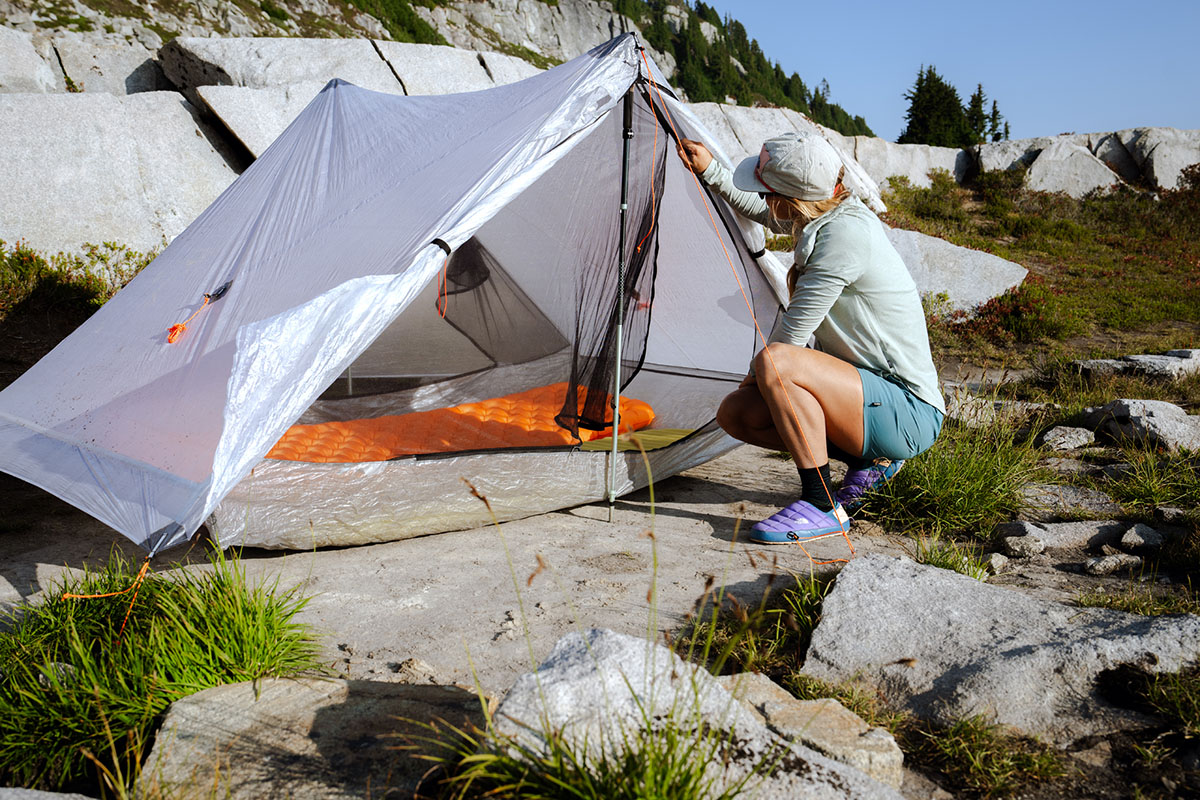
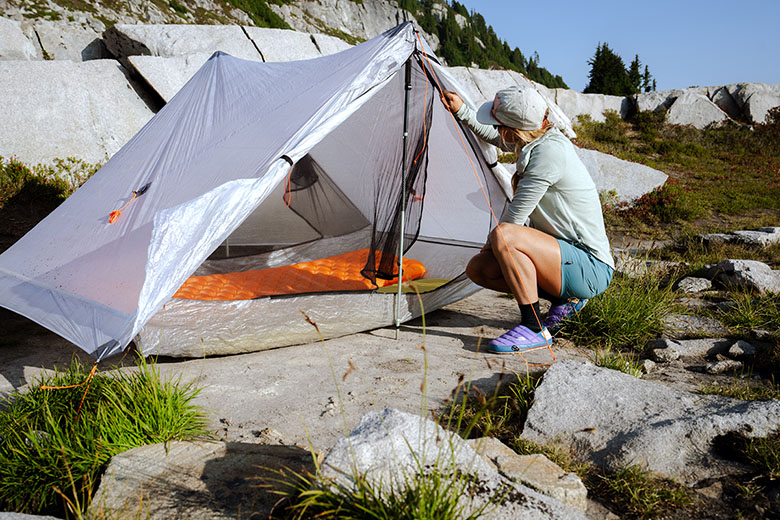
Price: $699
Packaged weight: 1 lb. 8 oz.
Floor dimensions: 90 x 48 in.
Capacity: 2P
What we like: A lightweight Dyneema trekking-pole tent with durable materials and impeccable build quality.
What we don’t: Other trekking-pole shelters are more innovative with their interior space, ventilation, and weather protection.
See the Hyperlite Unbound 2P
Dyneema-specialist Hyperlite Mountain Gear has tried their hand at trekking-pole tents in the past (notably with the discontinued Dirigo 2), but the Unbound is their best effort yet. Closely following the time-tested design of the Zpacks Duplex, the Unbound 2P is a spacious A-frame shelter (with an integrated bathtub floor) that easily accommodates two sleepers and their gear. Just a few weeks after testing the comparable Duplex Zip, we took the Unbound backpacking in Washington's Alpine Lakes Wilderness, where it impressed us with its stability in high winds, ease of setup, and high attention to detail. Below are our thoughts on the Unbound 2P. To see how it stacks up to the competition, check out our articles on the best ultralight tents and best backpacking tents.
The Hyperlite Unbound 2P has a listed weight of 1 pound 8 ounces; including the stuff sack, it checked in at 1 pound 9.2 ounces on my scale. This is impressively lightweight for a two-person tent, which Hyperlite pulls off by using thin Dyneema fabrics and streamlined components throughout. For comparison’s sake, the Unbound 2P weighs significantly less than popular freestanding and semi-freestanding tents like the Big Agnes Copper Spur HV UL2 (3 lb. 2 oz.) and Nemo Hornet (2 lb. 8 oz.). However, it checks in heavier than a few of our other favorite Dyneema trekking-pole tents, including the Zpacks Duplex Zip (1 lb. 4.4 oz.) and Durston X-Mid 2 Pro (1 lb. 3.7 oz.). While the difference of a few ounces won’t be a dealbreaker for most recreational users, it’s a consideration for ultralight backpackers who prioritize a low base weight.
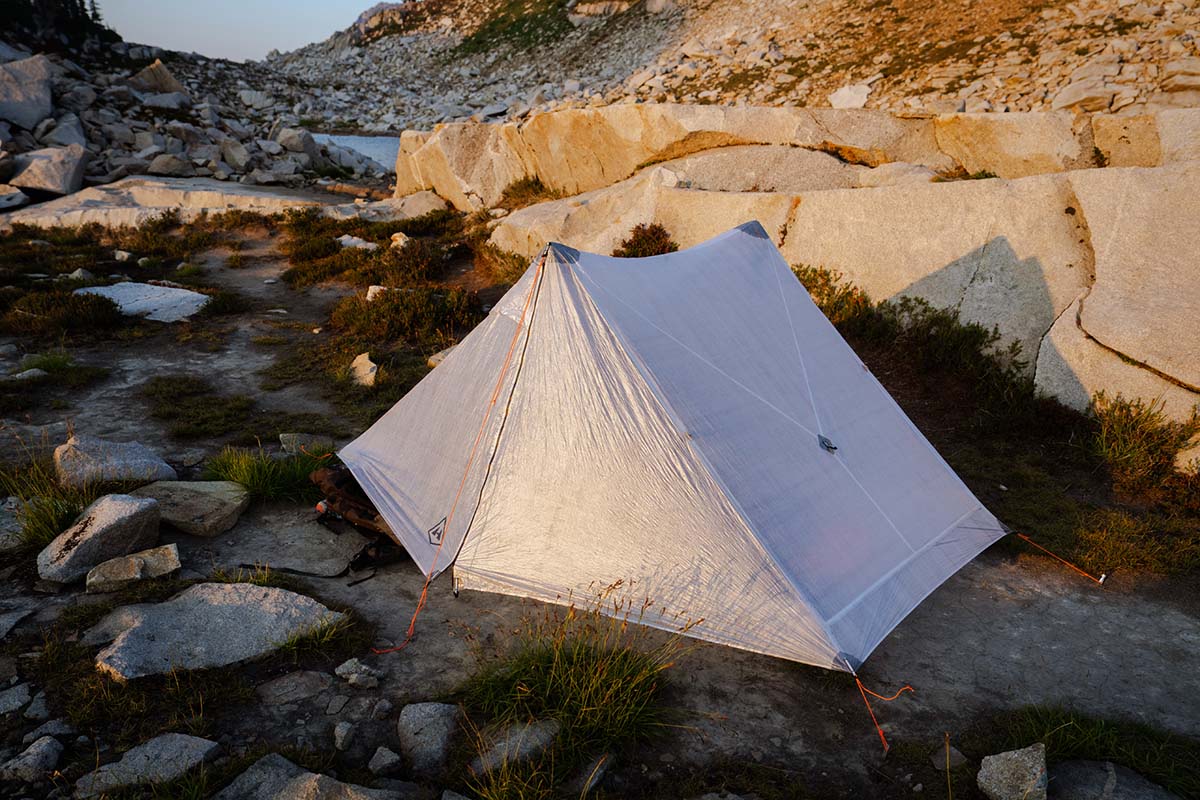
In terms of packed size, it’s first worth noting that—for all its strengths—Dyneema does not pack down super small. As a result, the Unbound 2P’s packed size is larger than that of many nylon or polyester tents—ours measures 13 by 8 inches when packed into its stuff sack (we found Hyperlite’s 8.5 x 6.0 x 5.5-in. measurement to be inaccurate). If space is at a premium, you can opt for a compression stuff sack and cinch it down to about half that size. And while Dyneema trekking-pole tents are fairly bulky, keep in mind that you don’t have to factor in tent poles, which saves considerable space.
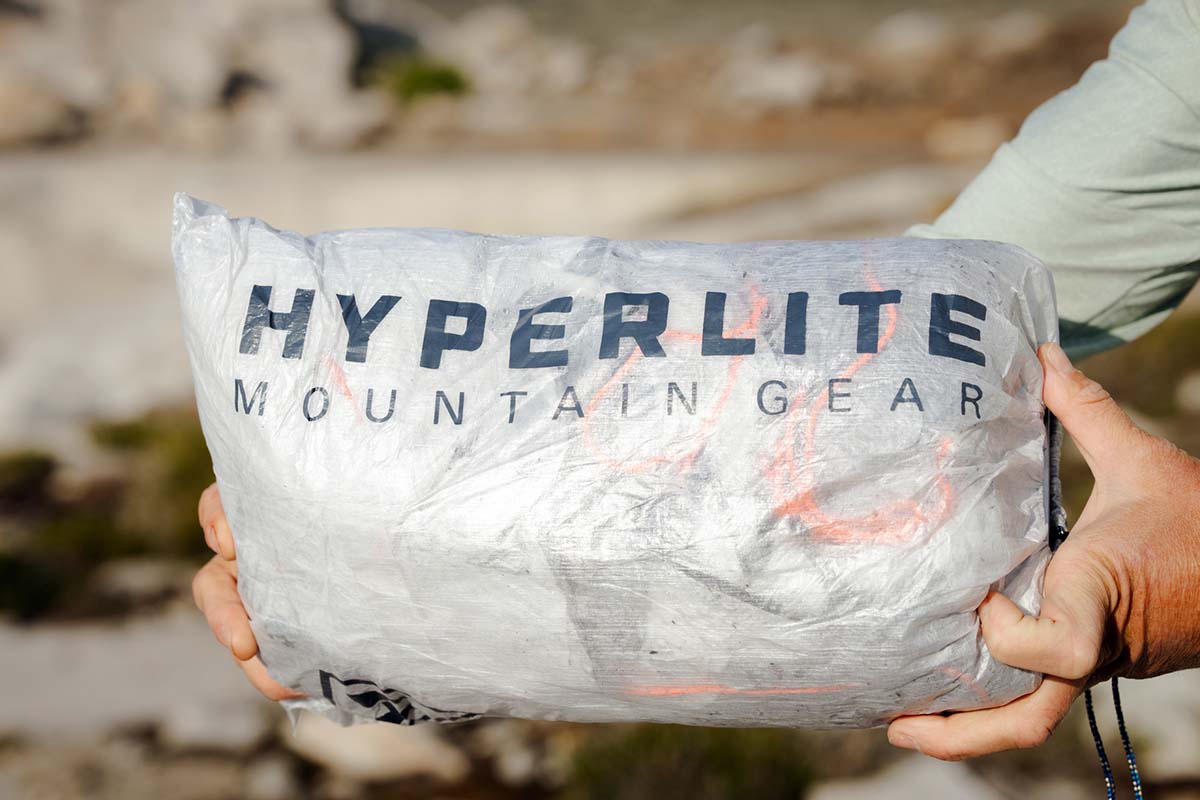
Like many trekking-pole shelters, the Hyperlite Unbound 2P offers a spacious floor area that easily accommodates two sleeping pads side-by-side. The floor measures 90 by 48 inches, with the bathtub walls extending 8 inches above the ground. This is a bit more spacious than much of the competition: The Zpacks Duplex Zip’s dimensions are 90 by 45 inches, while the Durston X-Mid 2 Pro measures 90 by 46 inches. In contrast, many freestanding and semi-freestanding tents have to shrink their floor dimensions to keep weight low, oftentimes tapering toward the foot (meaning you don’t get the luxury of sleeping head-to-toe with your tentmate). For example, the Copper Spur HV UL2’s dimensions are 88 by 52/42 inches, while the Nemo Hornet is even more cramped at 85 by 51/43 inches.
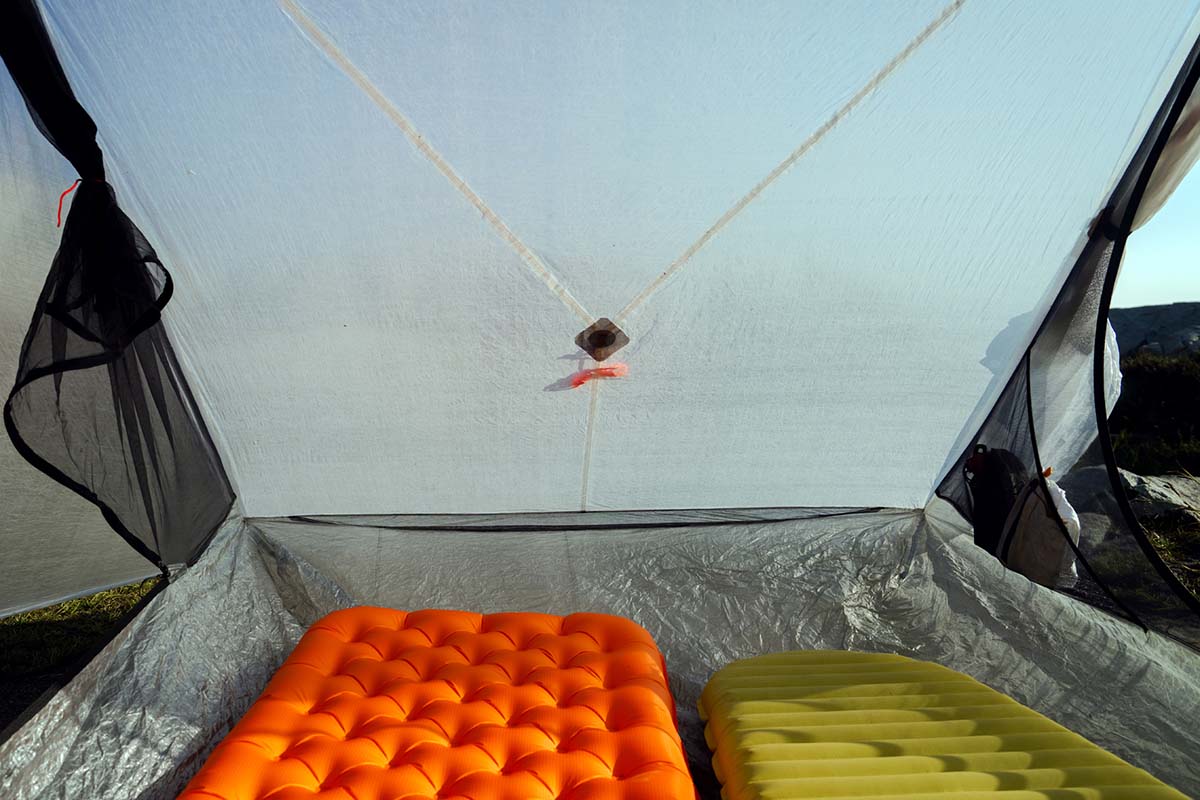
A tent’s peak height also contributes to livability, especially while changing clothes or sitting for long stretches of time during stormy days. The Hyperlite Unbound 2P is undeniably tall at 48 inches, but you also have to consider the slope of the tent’s walls: In the case of trekking-pole shelters like the Unbound and Duplex (also 48 in.), you get a sharp apex at the top and a sloping roofline toward the head and the foot. As a result, I had to sit up toward the middle of the tent to avoid coming into contact with the canopy, especially when it was wet with condensation or precipitation. By contrast, the Durston X-Mid 2 Pro’s offset-pole design places two separate apexes closer to the head on each side, which in my opinion is a much better arrangement.
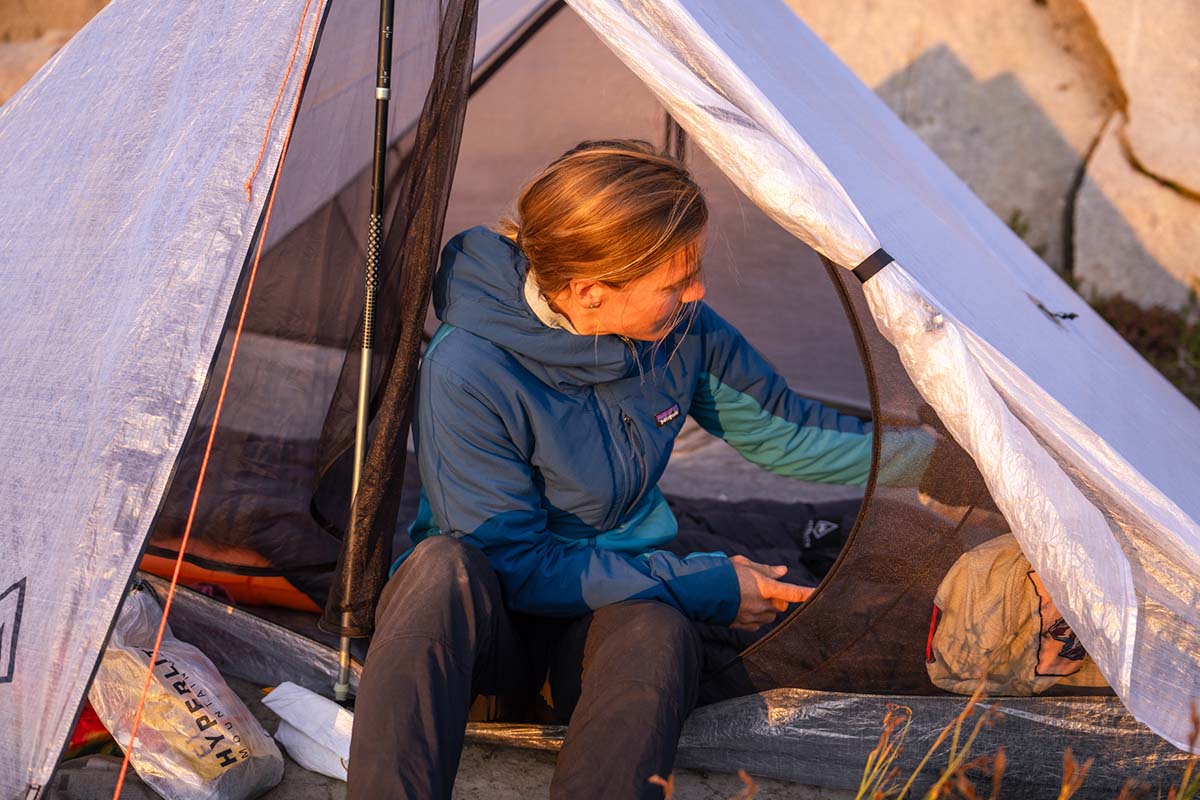
I tested the Unbound 2P back-to-back with the Zpacks Duplex Zip, and what stood out most between the two tents was the Hyperlite’s high-end build quality. Its construction and finish feel like a step up from the Zpacks: The door hardware is easier to operate and facilitates a tauter pitch, the magnet door keepers are slick and convenient, and the stitching is impeccably executed throughout. I also thought it had an added “cool factor” with the two Dyneema colors and contrasting orange components. To be sure, everything about the tent is undeniably streamlined—most notably, the #3 zipper—and requires a good deal of care. But in the end, the Unbound feels super premium, more along the lines of a mass-produced Big Agnes or Nemo tent than a cottage-brand trekking-pole shelter.
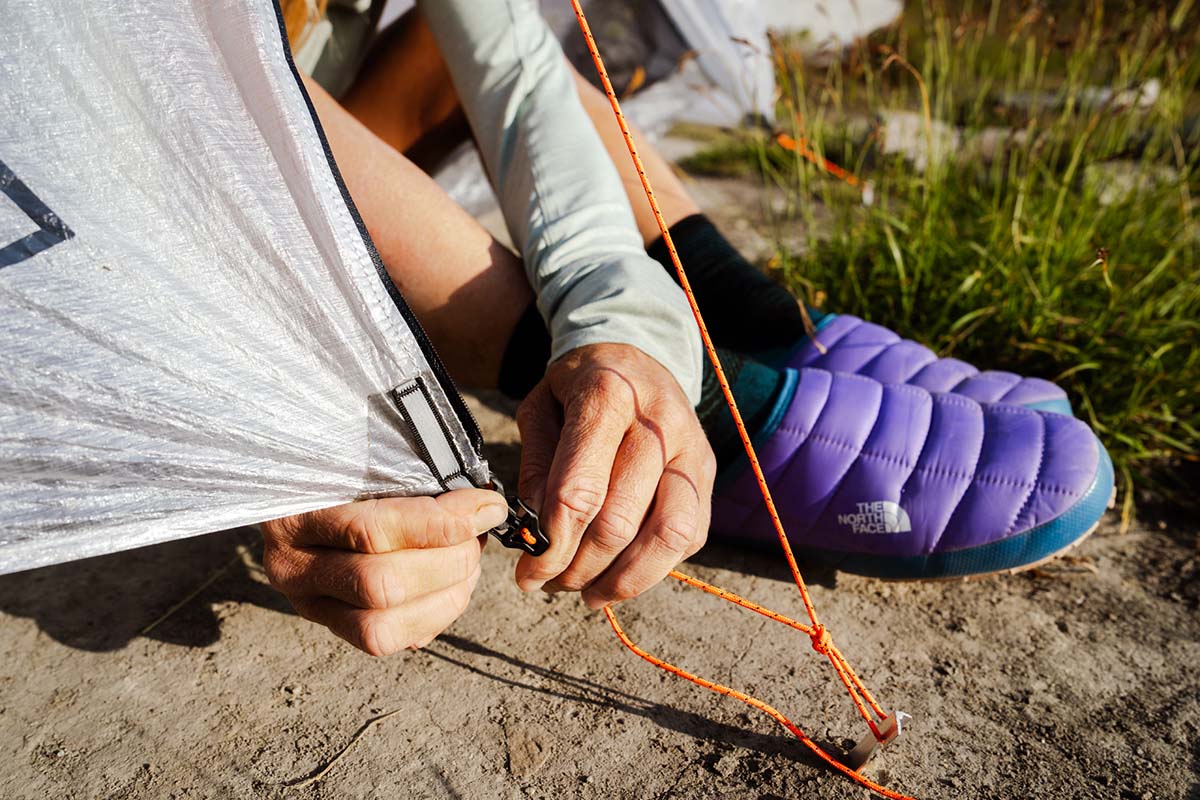
In terms of materials, the Unbound is built with a 0.55 ounce-per-square-yard (oz./sq. yd.) Dyneema canopy and 0.8 oz./sq. yd. Dyneema floor. These materials are thinner than those used in the Zpacks Duplex Zip, which features a 1.0 oz./sq. yd. floor and the option between 0.55 and 0.75 oz./sq. yd. canopies. Dyneema is a miracle fabric when it comes to tent canopies, given that it’s inherently waterproof and doesn’t stretch or sag when wet. However, it is prone to forming punctures, and thinner varieties are especially liable (including the Unbound’s floor). For this reason, Durston offers a version of their X-Mid 2 Pro with a silnylon floor, which is slightly heavier but more durable overall. All that said, our Unbound remained unscathed even when pitched on sharp rocks, and the good news is that a few minor holes can be easily patched and will do little to affect the overall performance of the tent.
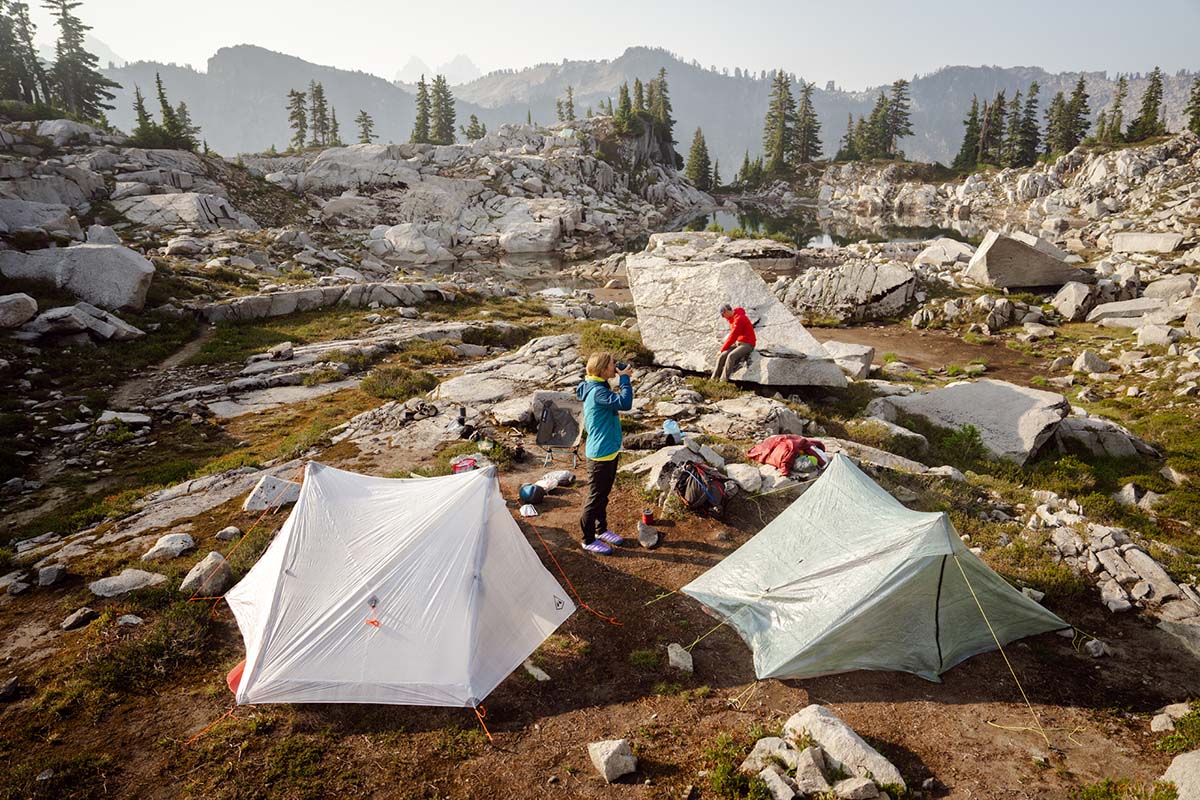
Wind
A bit of low pressure in the Alpine Lakes Wilderness proved to be an excellent testing ground for the Unbound, which had mixed results in inclement weather. On one particularly windy night, the tent flapped a great deal and filled with blustery air on a few occasions. While the flapping was very loud and everything inside was covered in a film of fine dust in the morning, the pitch was almost as taut as when I had first set it up. If you know you’ll be camping in windy conditions or in exposed environments, it can be a good idea to opt for a tent with less mesh at the base. Tarptent's Dipole 2 Li is a great option for high winds, with carbon-fiber struts on each end that increase stability in addition to patches of nylon fabric (instead of mesh) in the areas most vulnerable to gusts.
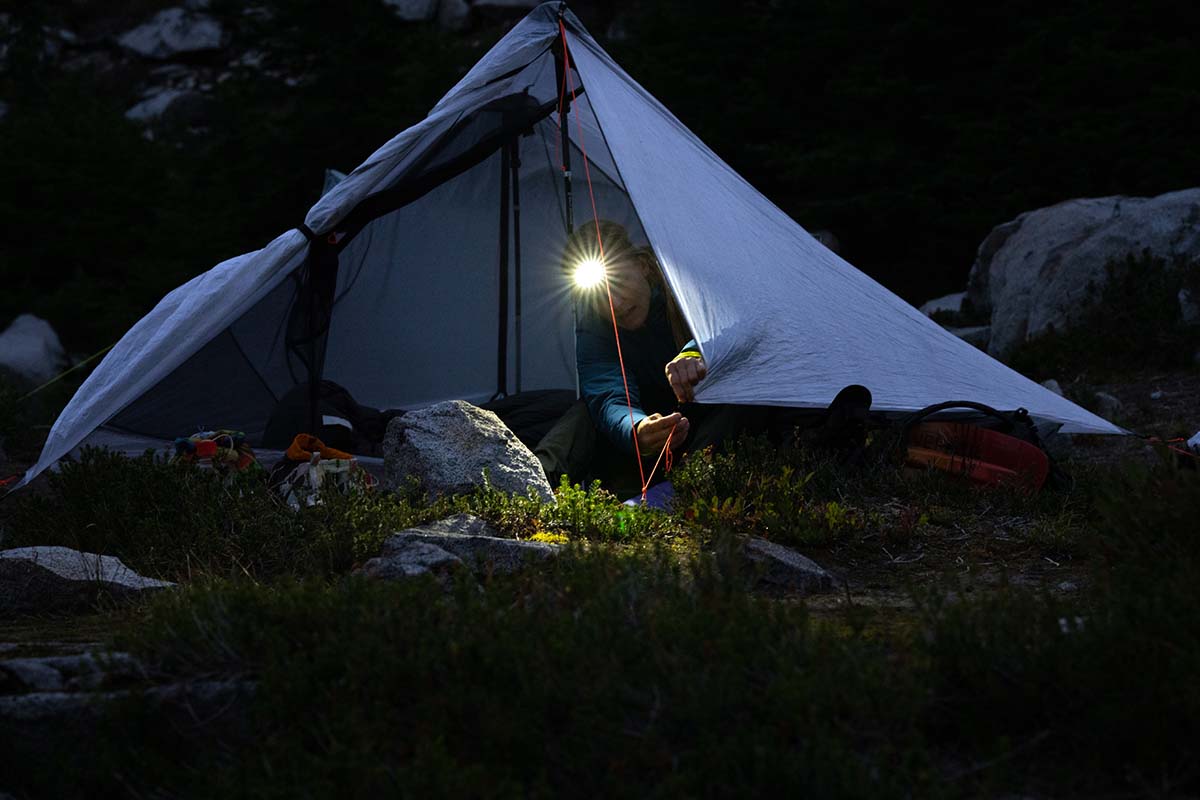
It’s worth noting that the Hyperlite rides a lot lower to the ground than the Zpacks, which hypothetically should help with wind resistance. What’s more, the trekking poles attach to a loop at the bathtub floor just under the door, which helps the floor stay in place when no one is in the tent to hold it down. However, Hyperlite offers no way to close the mesh insert at the head and foot, which means you’ll always be vulnerable to gusts entering at each end of the tent. In contrast, the Duplex Zip employs cinches to close up these mesh gaps in windy weather (although with full mesh doors, both tents are very vulnerable to gusts at each side).
Rain
The Unbound 2P’s Dyneema canopy is fully waterproof and sag-resistant, making it a formidable shelter in the rain. But while I experienced no water entering from the top, it is worth noting that the foot of my sleeping bag was very damp after a night of rain. My hunch is that this is due to droplets bouncing off the ground and through the mesh panel above the bathtub floor (it could also be a result of condensation and high humidity, given that we were camped in a cloud). The interior of the Dyneema also felt wet to me, but it’s tough to say whether or not this was condensation or moisture seeping through; regardless, you’ll want to be careful not to come into contact with the tent walls after rain.
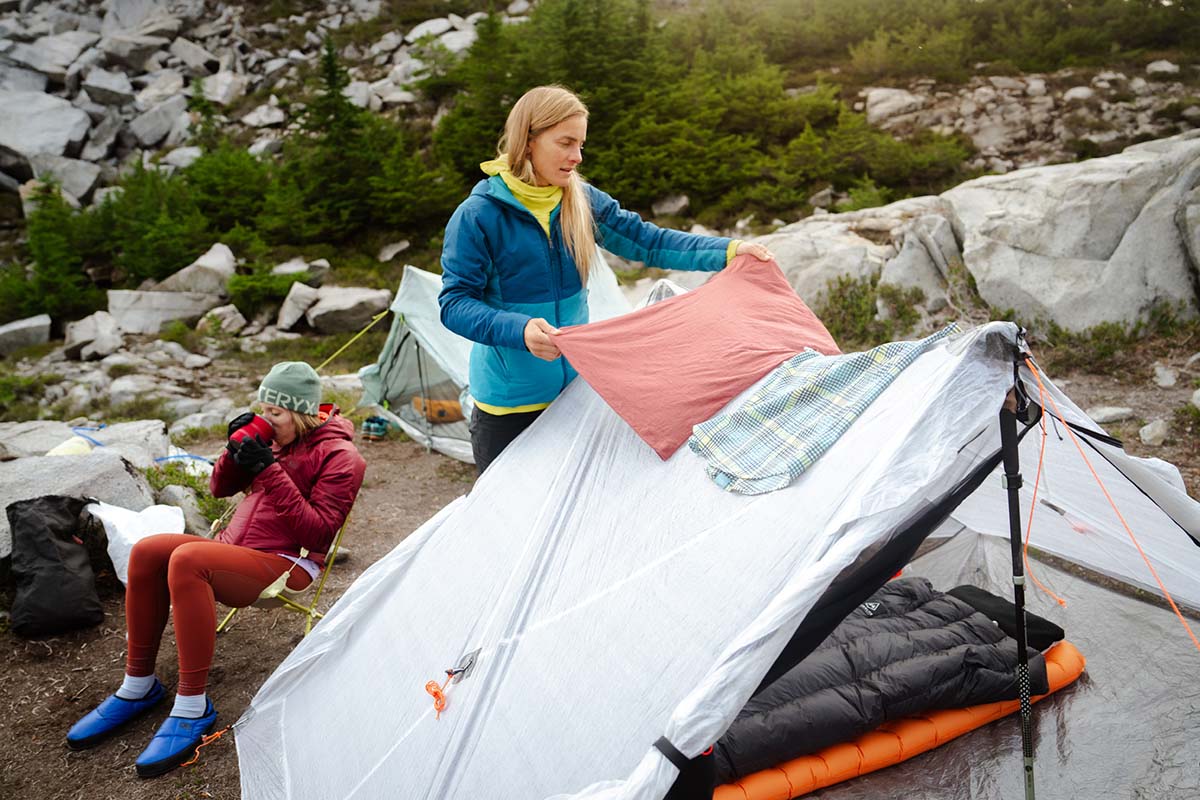
Getting caught in a rainstorm while tent camping is never ideal, and you can hedge your bets with a more protective shelter. A double-wall backpacking tent will offer more separation between you and the wet fly, which can be really nice if you spend a lot of time sitting up inside. What’s more, a tent with more solid material around the base—or in the case of the Zpacks, cinches that close the mesh panel at the head and toe—will do a better job keeping out rain splashes. But if you’re mindful to set the Unbound’s fly close to the ground, you can mitigate most of the moisture entering from below.
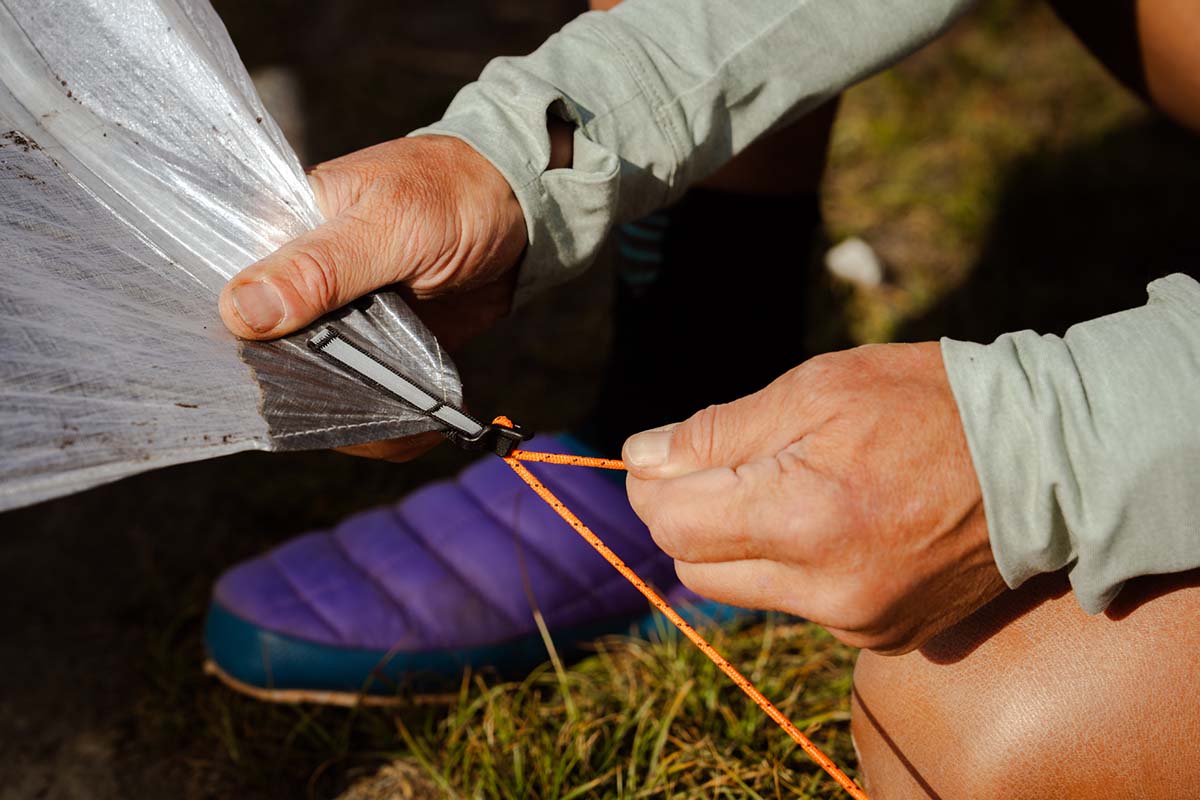
Dyneema isn’t known for its breathability, so ventilation is one of the Unbound’s greatest challenges. To help, Hyperlite placed vents at the top of each door to encourage a cross breeze, although in most cases, these vents aren’t enough. In clear and calm conditions, it’s a good idea to open the doors on both sides, or at least on the downwind side. When you’re forced to batten down the hatches in the rain, the Unbound does have a tendency to collect condensation. Keep in mind that the fly still hangs over the drip line when the vestibule doors are open, so you can play with keeping the tent aired out even in wet weather. That said, if you plan to be out a lot in inclement conditions, we recommend a double-wall shelter instead, where air can better flow out the mesh tent walls (or check out a well-ventilated trekking-pole design like the Tarptent Dipole 2 Li).
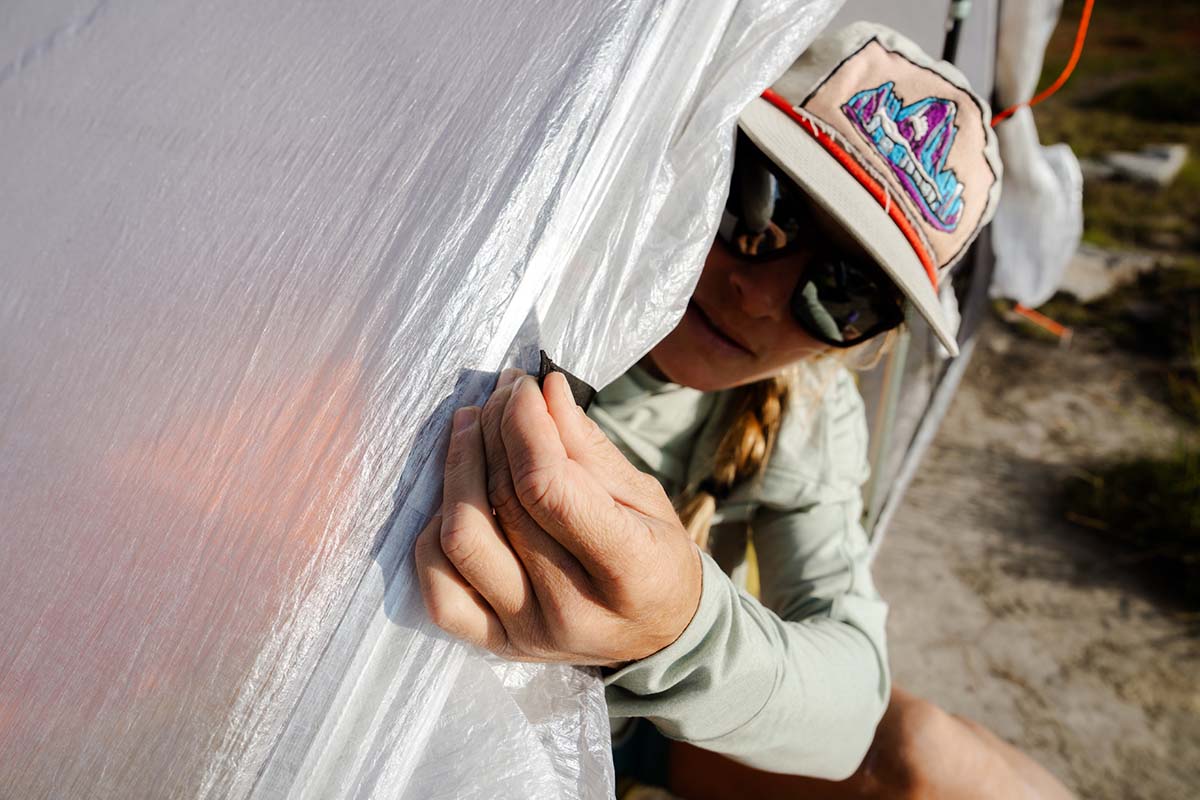
The Hyperlite Unbound 2P has two small vestibules, one on each side. Hyperlite doesn’t offer dimensions, but they extend out from the door about 24 inches, forming a triangle with the side of the tent. Similar to most trekking pole designs, the vestibules are roomy enough to fit my backpacking pack and boots but not much more. What’s more, the most usable space is inconveniently front and center—by contrast, the Durston X-Mid 2 Pro’s more refined design puts the usable space (i.e., the peak of the triangle) to the side. In terms of storage, you get two pockets—one beside the door on each side—and three hang ties at the roof accommodate carabiners or a guyline drying rack. Although minimal, the Unbound 2P’s streamlined storage is standard for an ultralight tent; if you want more bells and whistles, look at standard backpacking tents like the Big Agnes Copper Spur HV UL2.
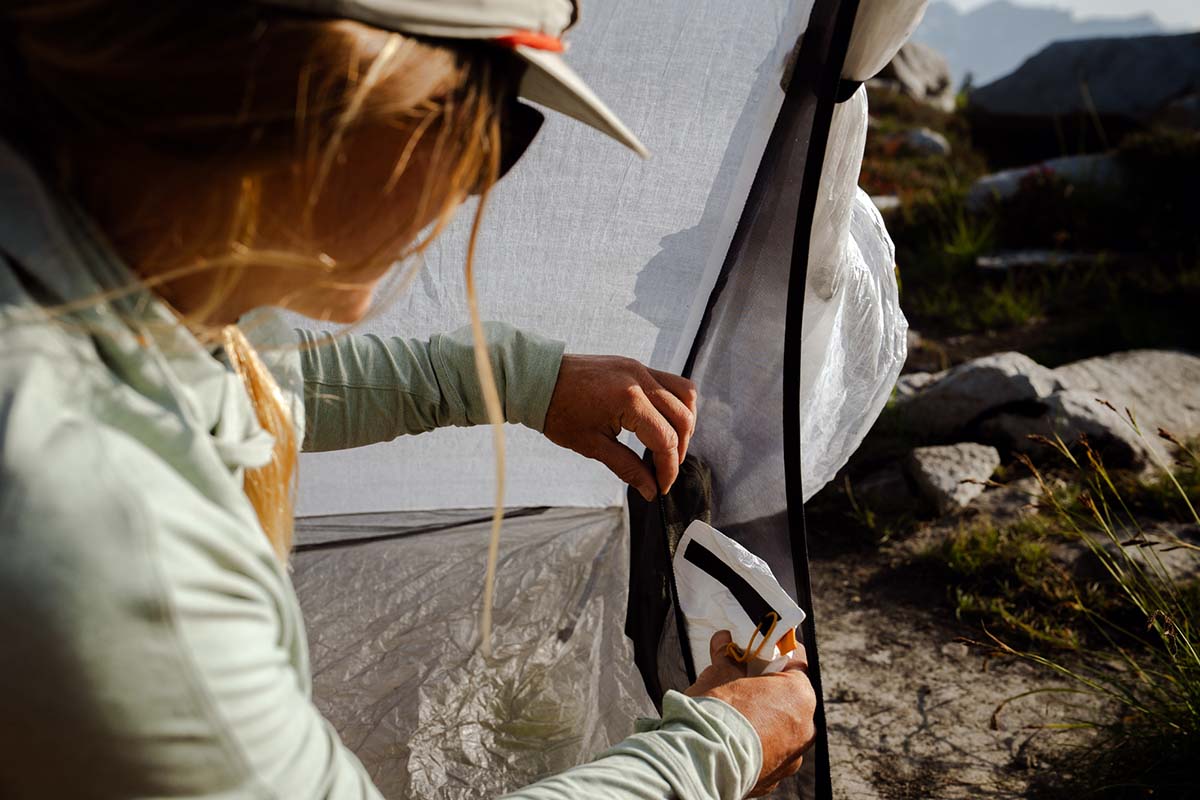
A lot of backpacking tents feature double-wall designs that require you to first pitch the tent body and then attach the fly, but the Hyperlite Unbound 2P shortens the setup process with its single-wall construction. This also offers some security for setting the tent up in the rain, as the living area is never exposed to the elements. As with all trekking-pole tents though, it does take some practice to get a fully taut pitch; with each setup, I had to go around the tent and tweak the tensioners to find the right degree of tautness at each angle.
There are a few differences between the setup of the Unbound 2P and the comparable Zpacks Duplex Zip worth noting. For one, the Duplex features much longer guylines, which I found indispensable for setting up in rocky terrain (where I was using large rocks to secure the tent rather than stakes). You can buy extra line to extend the length of the Unbound’s guylines, but the solution will be clunky at best. On the other hand, I strongly preferred Hyperlite’s door tensioning system, which was much more straightforward than Zpacks'. In addition to being easier to set up, it also uses a buckle rather than a hook to secure the doors, which is simple to use and feels more high-end.
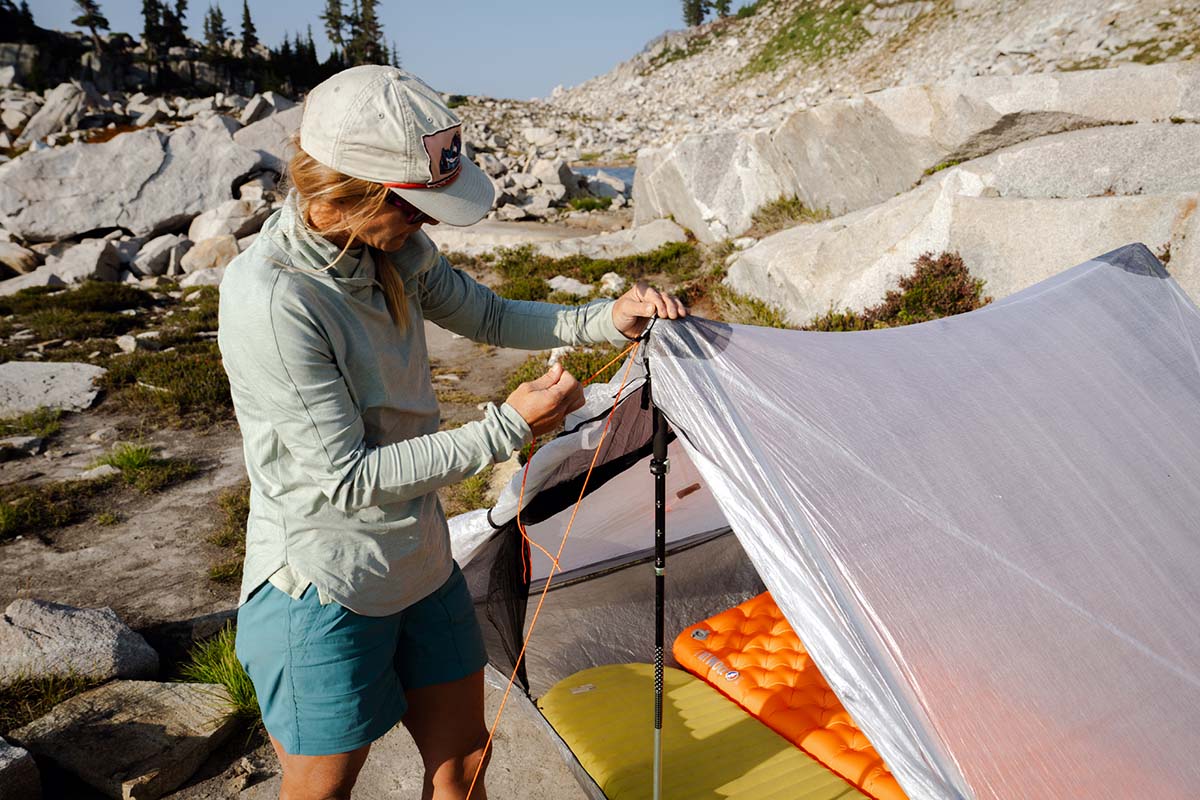
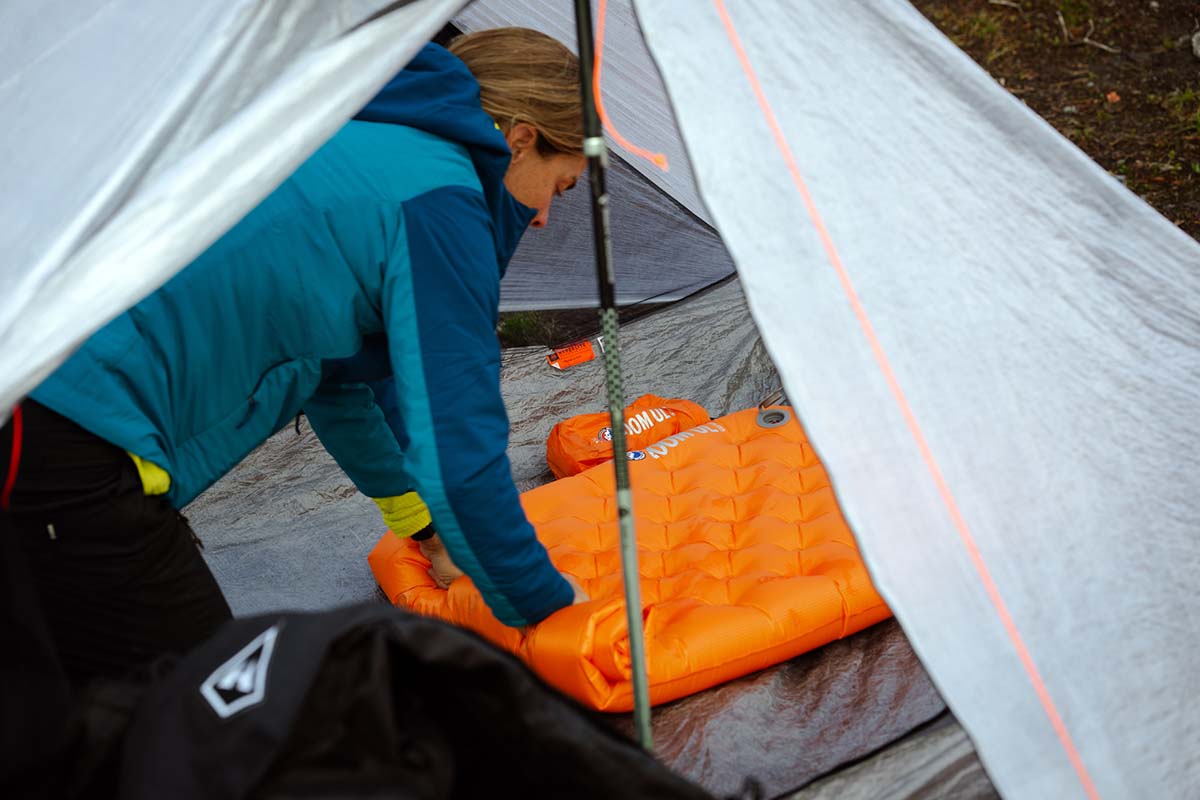
| Tent/Shelter | Price | Category | Weight | Floor Dimensions | Fly/Floor | Capacities |
|---|---|---|---|---|---|---|
| Hyperlite Unbound 2P | $699 | Trekking pole | 1 lb. 8 oz. | 90 x 48 in. | DCF (.55/.8 oz.) | 2P |
| Zpacks Duplex Zip | $699 | Trekking pole | 1 lb. 4.4 oz. | 90 x 45 in. | DCF (.55/1.0 oz.) | 2P, 2+P, 3P |
| Durston X-Mid 2 Pro | $739 | Trekking pole | 1 lb. 3.7 oz. | 90 x 46 in. | DCF (.55 oz.) | 1P, 2P, 2+P |
| Gossamer Gear The Two | $320 | Trekking pole | 1 lb. 7.9 oz. | 84 x 48/42 in. | Nylon (10D) | 1P, 2P |
| Tarptent Dipole 2 Li | $799 | Trekking pole | 1 lb. 10.8 oz. | 86 x 58 in. | DCF (.51/1.0 oz.) | 1P, 2P |
| Nemo Hornet Elite 2P | $650 | Semi freestanding | 2 lb. 1 oz. | 85 x 50/42 in. | Poly/nylon blend | 2P |
Within the Dyneema A-frame trekking-pole shelter category, the Zpacks Duplex Zip is arguably the most popular design. The differences between the two tents are small but noteworthy: Zpacks uses a more robust floor fabric than the Unbound and gives you the option of a thicker canopy. It also tacks on cinches that close the mesh panels at both ends to mitigate splashes and wind sneaking through. And although it’s a minor nitpick, I appreciate how the Duplex’s mesh doors hinge from the bottom rather than the side, which creates more open space (for more, see our in-depth Duplex Zip review). But it’s not all team Zpacks: When testing the two back-to-back, I was struck by how premium the Hyperlite felt compared to the cottage-brand Duplex, and its added cool factor (by way of easier-to-operate components, a white Dyneema canopy, and vibrant orange accents) was palpable. Further, it rides a lot lower to the ground, which can make a big difference in wet and windy weather. If you don’t mind the 3.6-ounce weight penalty, the Unbound is a more high-end and protective take on the design, although there’s still a lot to like about the Duplex.
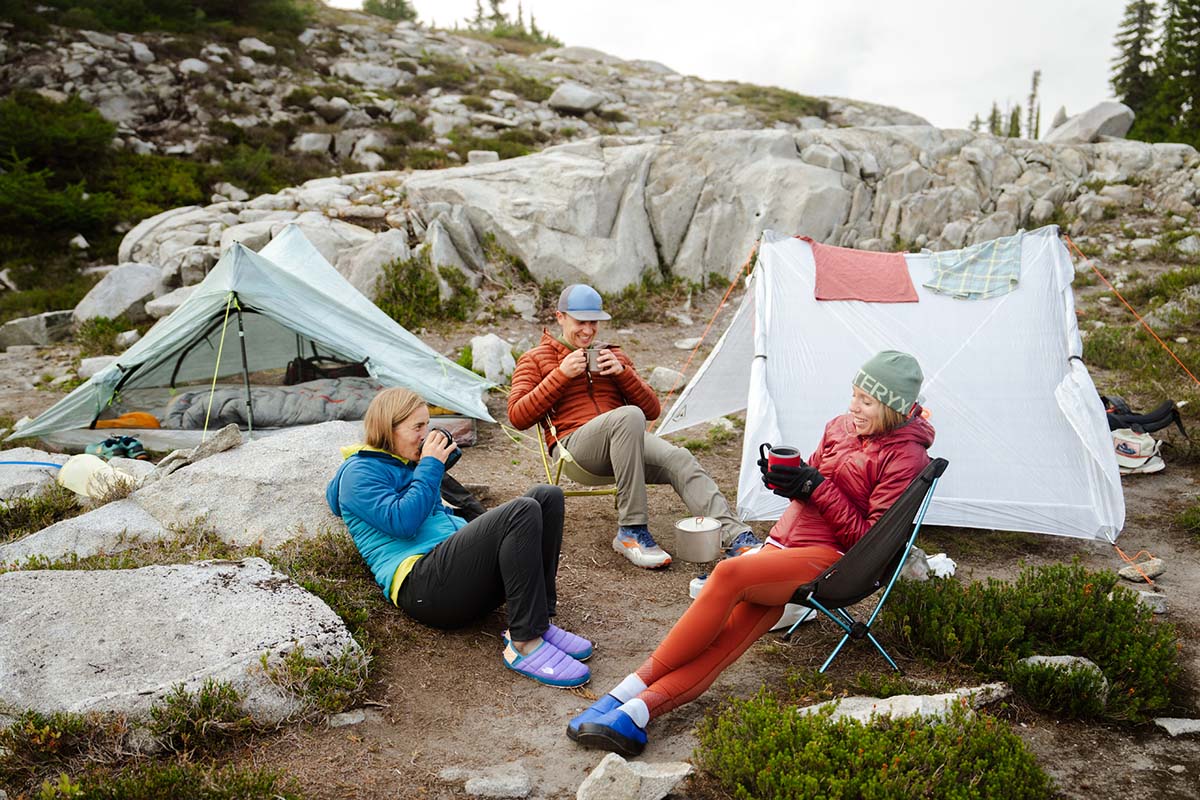
Canada-based Durston isn’t as big of a name as Zpacks or Hyperlite, but their X-Mid 2 Pro gives the Unbound and Duplex Zip a serious run for their money. Durston uses a well engineered offset-pole design, which translates to a simple four-stake pitch (the Hyperlite requires at least six stakes) and no mandatory guylines. This design also places the headroom near each head (assuming you’re sleeping head-to-toe with your tentmate) rather than at the center of the tent and offsets the vestibules so that their usable area is beside the door rather than in front. Other differences include a lower-cut fly for better protection, a fully tensioned bathtub floor (the Unbound’s is hanging), and the option for a silnylon floor, which is more packable and arguably more durable than Dyneema. All that added tech, and the Durston is still lighter than the competition at just 1 pound 3.7 ounces (excluding stakes). You’ll pay $40 more for the all-Dyneema version (and $60 less for the partial-nylon model), but Durston is a dark horse, and we think their X-Mid 2 Pro is the most well-rounded trekking-pole shelter currently on the market.
If you’re looking to save some cash, check out Gossamer Gear’s The Two. For $379 less than the Unbound, The Two features a very similar single-wall trekking-pole design but swaps out the Dyneema for a nylon floor and fly. Surprisingly, it also checks in at a similar weight of 1 pound 7.9 ounces, excluding stakes (the Unbound’s weight spec also excludes stakes). But there are some noteworthy trade-offs: The Two’s floor area is considerably smaller and tapered (84 by 48/42 in.), and—unlike Dyneema—nylon is not naturally waterproof (it requires waterproof coatings, which will wear off over time) and has a tendency to sag when wet. The Two also has a reputation for gathering condensation, and you’ll have to employ similar ventilation tactics to those we mentioned for the Unbound. But for ultralight backpackers looking to save money, the Gossamer Gear is a much-loved and time-tested option.
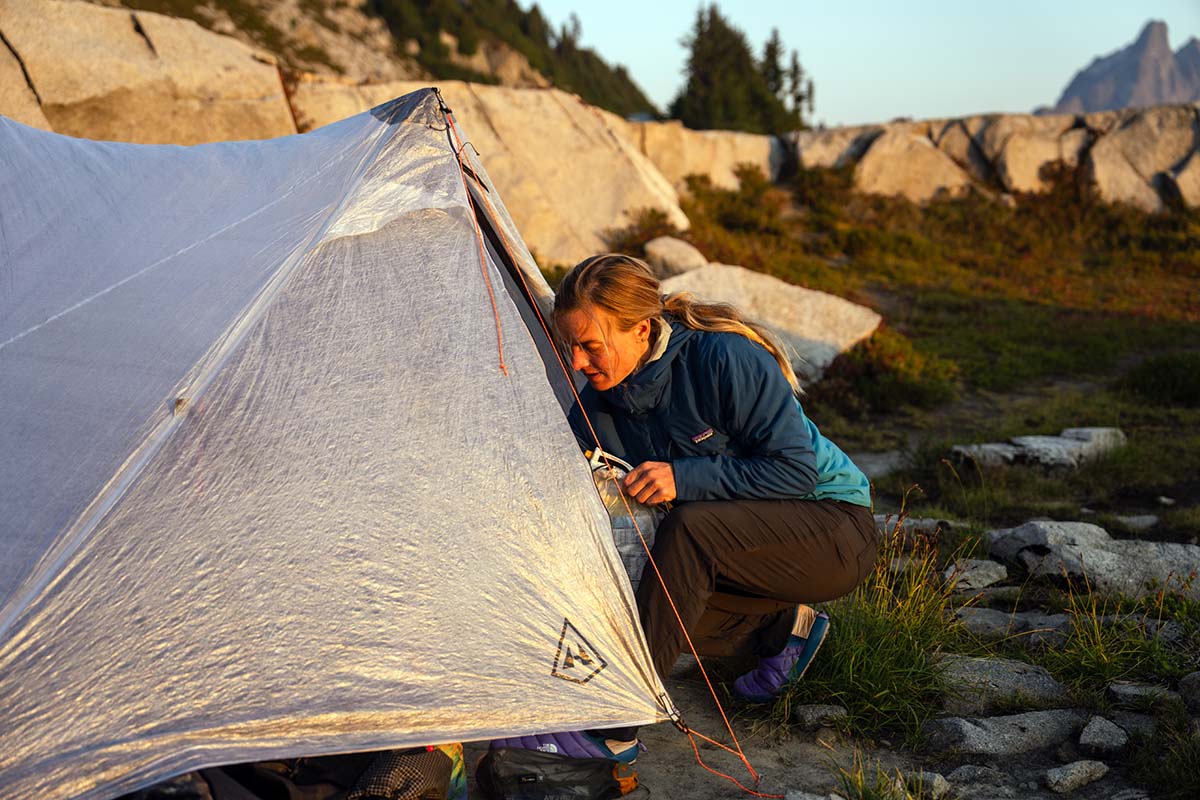
In a discussion of ultralight tents, we’d be remiss not to also mention Tarptent, which offers a large selection of one, two, and three-person designs. Their Dipole 2 Li is an innovative spinoff of the standard A-frame trekking-pole tent, addressing issues of condensation, weather protection, and livable space. It adds 21-inch carbon-fiber struts (these remove and collapse to 13 in.) at each end of the tent, which does three things. First, the struts increase headroom throughout the tent and facilitate a more gently sloping roof throughout. Second, by offering a few more points of contact, they increase the tent’s stability in wind, which also helps to decrease flapping. And finally, Tarptent placed mesh vents at each end (these can be closed on windy or rainy nights) for improved ventilation. The Dipole is heavier than the competition at 1 pound 10.8 ounces (excluding stakes) and expensive at $799, but the improvements could be well worth it for those who spend a lot of time in inclement weather.
Finally, if you’re in the market for an ultralight tent, it’s also worth considering a semi-freestanding design like the high-end Nemo Hornet Elite Osmo 2P. The Hornet Elite is the heaviest model here at 2 pounds 1 ounce (including stakes), but you won’t find a lighter semi-freestanding tent. There are two primary benefits to the design: First, a semi-freestanding tent doesn’t rely on tension to maintain a taut pitch, which is especially helpful when camping on large slabs (you’d need very heavy rocks to secure the Unbound). Second, due to the double-wall design, ventilation is vastly improved. All told, the Hornet Elite is a user-friendly design for new backpackers or those who don’t like to fiddle with their gear. But there are downsides: Its thin fabrics aren’t nearly as hardwearing as Dyneema (although the fly is sag-resistant thanks to Nemo’s Osmo technology), and the floor area is much smaller and tapered at 85 by 50/42 inches. But if you want to go ultralight without dipping into the trekking-pole market, the Nemo Hornet Elite is your best bet.